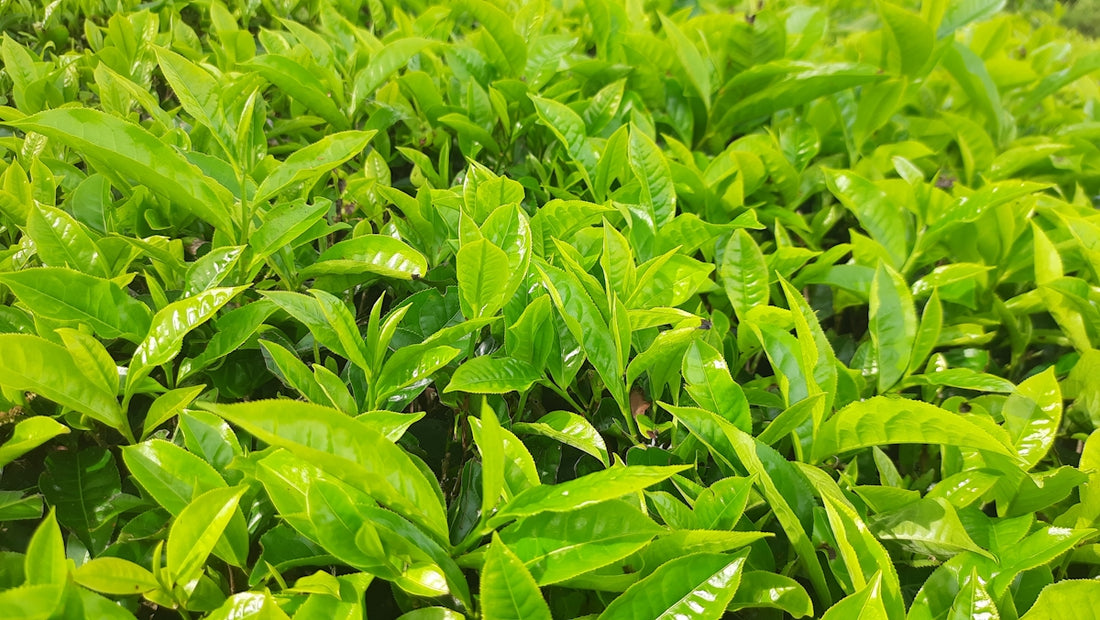
The Science Behind the Flavours in Green Tea Leaves Explained
Green tea has captivated the interest and taste buds of people worldwide, becoming a staple in health-conscious diets and a symbol of tranquility and rejuvenation. This beloved beverage isn't just favored for its health benefits but for its diverse and delicate flavors. But what is it that creates these unique tastes in green tea leaves? Let’s dive into the science behind the flavors in green tea and explore what makes each cup a sensory delight.
Understanding the Basics: What Are Green Tea Leaves?
Green tea leaves are derived from the Camellia sinensis plant, just like black, white, and oolong teas. However, what sets green tea apart is the minimal oxidation the leaves undergo during processing. This allows the tea to retain its green color and a higher concentration of natural compounds.
To explore a variety of green teas, visit Tea Start.
The Chemistry of Flavour in Green Tea
1. Polyphenols: The Key Players
Green tea is rich in polyphenols, primarily catechins, which are responsible for its characteristic astringency and bitterness. Catechins, particularly epigallocatechin gallate (EGCG), are also what endow green tea with its potent antioxidant properties. These compounds react with saliva, contributing to the complex flavors you experience with each sip.
2. Amino Acids: Unveiling Umami
Amino acids, particularly L-theanine, play a crucial role in the flavor profile of green tea. L-theanine imparts a savory, umami taste that balances the bitterness of catechins. This unique combination gives green tea its mellow and soothing flavor.
3. Terpenes: Aromatic Elegance
Terpenes are aromatic compounds that provide fruity and floral notes in green tea leaves. Depending on the processing and cultivation conditions, these can range from soft and sweet to more pronounced floral aromas.
4. Chlorophyll: The Source of Freshness
Chlorophyll, which gives fresh leaves their green color, also contributes to the fresh and slightly grassy flavor of green tea. This component becomes more prominent in green teas produced with less processing.
5. The Impact of Cultivation and Processing
The flavors in green tea are significantly influenced by how the tea leaves are grown and processed. Variables like harvest time, location, and the specific methods of steaming or pan-firing can accentuate different flavor profiles.
For an example of a delicately processed green tea with distinct characteristics, explore Dragonwell- Longjing Green Tea.
Diverse Flavours: Exploring Different Green Teas
Within the green tea category, you'll find a wide range of flavor expressions. Here are some popular types and their distinct flavor profiles:
Dragonwell (Longjing) Green Tea
Dragonwell is known for its smooth, chestnut-like flavor with an elegantly sweet and pleasantly vegetal character. It's a result of meticulous pan-firing, which preserves its nuanced flavor profile. Consider trying our West Lake Dragon Well - Longjing Green Tea to experience this classic.
Meng Ding Gan Lu "Sweet Dew"
This tea offers a delightful sweet and fruity flavor, a remarkable balance of richness and subtlety. Its flavor profile is due to the high altitude at which the leaves are grown, contributing to its unique aromatic notes. Explore Meng Ding Gan Lu "Sweet Dew" to see how altitude influences taste.
Anji White Tea
Anji White Tea is technically a green tea that offers a fresh and sweet profile, characterized by a light color and a touch of floral essence. It's reminiscent of a gentle spring morning, providing a refreshing experience. Taste the nuance with Anji White Tea.
Cold Green Tea: A Refreshing Twist
Cold green tea offers a modern take on this ancient beverage, presenting its flavors in a refreshed style. The cold brewing process emphasizes the natural sweetness and umami notes while reducing bitterness.
How Cold Brewing Works
Cold brewing involves steeping green tea leaves in cold water over a prolonged period, usually 6-12 hours. This extraction method helps highlight the delicate, sweet, and floral notes without the edge of bitterness.
Brewing Tips for Perfect Flavor
To unlock the full potential of green tea flavors, here are some brewing tips:
- Use Fresh, Filtered Water: The quality of water significantly affects the taste. Use filtered water to prevent chlorine or hardness from masking the tea's subtle flavors.
- Mind the Temperature: Optimal brewing temperatures for green tea range from 160°F to 185°F (70°C to 85°C). Too hot, and you risk burning the leaves, causing bitterness.
- Control the Steeping Time: Green tea should generally be steeped for 1-3 minutes, depending on your taste preference and the specific variety.
- Perfect Proportions: A general rule is one teaspoon of tea leaf per cup of water. Adjust according to personal taste.
Conclusion
Exploring the flavors in green tea leaves is no less than embarking on a sensory journey where science meets art. From the intricate chemistry of amino acids and polyphenols to the tactile elegance of terpenes and chlorophyll, each cup of green tea tells a story rooted in tradition and nature’s complexities.
To further your journey into the world of green tea and discover more about these captivating flavors, visit Tea Start today. Embrace the time-honored art of tea-making and enjoy the symphony of flavors that await you.
